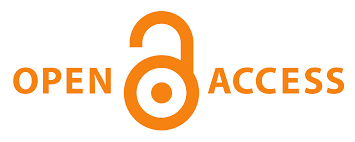Enhancing English Speaking Proficiency through Video Assignments: Addressing Linguistic and Psychological Challenges among Indonesian EFL Students
Main Article Content
Yuli Rohmiyati
Ali Imron
Nur Asiah
In a globally interconnected society, being able to communicate effectively requires language skills, especially in English. Speaking ability is the most crucial language ability, particularly for English as a Foreign Language (EFL) students. This literature review study explores the challenges faced by Indonesian English learners in developing their speaking skills and proposes solutions to overcome these obstacles. It emphasizes the critical role of speaking in language acquisition and highlights linguistic challenges such as grammar, vocabulary, and pronunciation, as well as psychological challenges including lack of confidence, fear, and anxiety. Additionally, the lack of opportunities to practice speaking English is identified as a significant problem. To address these issues, the study discusses the use of video assignments as an effective tool to enhance speaking skills. This research aims to help students become more confident and proficient English speakers, offering valuable insights for educators and learners alike. The result shown that the students can reduce the speaking problems effctively through making video assignment.
Abdullah, M. Y., Hussin, S., & Ismail, K. (2019). Implementation of flipped classroom model and its effectiveness on English speaking performance. International Journal of Emerging Technologies in Learning (Online), 14(9), 130. https://doi.org/10.3991/ijet.v14i09.10348
Al-Jarrah, J. M., Waari, O. T., Talafhah, R. H., & Al-Jarrah, T. M. (2019). Improving English Grammar Achievement through Educational Games among Eleventh Grade Students in East Jerusalem. International Journal of Academic Research in Progressive Education and Development, 8(1), 63–72. https://doi.org/10.6007/ijarped/v8-i1/5529
Al-Mekhlafi, A. M., & Nagaratnam, R. P. (2011). Difficulties in teaching and learning grammar in an EFL context. International Journal of Instruction, 4(2), 14–17. http://www.eric.ed.gov/ERICWebPortal/contentdelivery/servlet/ERICServlet?accno=ED522689
Aminah, S. (2018). The Use of Video in Teaching Writing Procedure Text. NOBEL: Journal of Literature and Language Teaching, 9(2), 148-157. https://doi.org/10.15642/NOBEL.2018.9.2.148-157
Arbain, A., & Nur, D. R. (2017). Techniques for teaching speaking skill in Widya Gama Mahakam University. Script Journal: Journal of Linguistics and English Teaching, 2(1), 13-25.
Beisenbayeva, L. (2020). Using the Mother Tongue in Foreign-Language Learning: Secondary School Students in Kazakhstan. International Journal of Instruction, 13(3), 605-616.
Bekai, W., & Harkouss, S. (2018). the Role of Motivation in Teaching Speaking in Esp: a Case Study of a Lebanese Private University. Journal of Teaching English for Specific and Academic Purposes, 6(1), 141. https://doi.org/10.22190/jtesap1801141b
Chinnery, G. M. (2006). Going to the MALL : Mobile Assisted Language Learning. Language Learning & Technology, 10(1), 9–16. http://www.llt.msu.edu/vol10num1/pdf/emerging.pdf
Creswell, J. W., & Creswell, J. D. (2017). Research design: Qualitative, quantitative, and mixed methods approaches. Sage publications.
Derwing, T. M., & Munro, M. J. (2013). The development of L2 oral language skills in two L1 groups: A 7‐year study. Language learning, 63(2), 163-185. https://doi.org/10.1111/lang.12000
Desmiyanti, D., Yuanita, Y., & Anwar, K. (2020). Make a match learning for English conversation skills of students with intellectual disabilities. Script Journal: Journal of Linguistics and English Teaching, 5(1), 23-31.
Fadhillah, N., Siregar, E. A., Lestari, U. H. P., Rahman, F., & Khalsiah, K. (2024). Society 5.0 in Education: Interactive Learning through Digital Media Integration on Teaching Speaking. Scope: Journal of English Language Teaching, 9(1), 392-402. http://dx.doi.org/10.30998/scope.v9i1.24084
Fattah, S. F. E. S. A. (2015). The Effectiveness of Using WhatsApp Messenger as One of Mobile Learning Techniques to Develop Students’ Writing Skills. Journal of Education and Practice, 6(32), 115–127. http://libezproxy.open.ac.uk/login?url=http://search.ebscohost.com/login.aspx?direct=true&db=eric&AN=EJ1083503&site=ehost-live&scope=site
Fitria, T. N. (2024). Understanding the Educational Psychology and English Language Teaching: Insights for both EFL and Non-EFL Learners. JETLEE : Journal of English Language Teaching, Linguistics, and Literature, 4(1), 37–53. https://doi.org/10.47766/jetlee.v4i1.1932
Fitriani, D. A., Apriliaswati, R., & Wardah. (2015). a Study on Student’S English Speaking Problems in Speaking Performance. JPPK: Journal of Equatorial Education and Learning, 4(9), 1–13. https://doi.org/10.26418/jppk.v4i9.11345
Galante, A. (2018). Drama for L2 speaking and language anxiety: Evidence from Brazilian EFL learners. RELC Journal, 49(3), 273-289. https://doi.org/10.1177/0033688217746205
Goh, C.C.M. (2016). Teaching Speaking. In: Renandya, W., Widodo, H. (eds) English Language Teaching Today. English Language Education, vol 5. Springer, Cham. https://doi.org/10.1007/978-3-319-38834-2_11
Hawalaina, R., Heriansyah, H., & Silviyanti, T. M. (2018). Investigating students’ nonlinguistic problems of speaking. Research in English and Education Journal, 3(2), 103-111.
He, J., & Huang, X. (2020). Using student-created videos as an assessment strategy in online team environments: A case study. Journal of Educational Multimedia and Hypermedia, 29(1), 35-53. Retrieved July 21, 2024 from https://www.learntechlib.org/primary/p/208362/.
Hidayati, A. N. (2020). The effect of English news video on students’ speaking skill. Journal of Language Intelligence and Culture, 2(2), 115-125. https://doi.org/10.35719/jlic.v2i2.27
Irawan, B., & Tampubolon, M. A. (2020). Using Phonetic Transcription To Improve Students’ Pronunciation Skills. Edulingua: Jurnal Linguistiks Terapan Dan Pendidikan Bahasa Inggris, 7(2), 1–12. https://doi.org/10.34001/edulingua.v7i2.1325
Kansil, V. E., Tuna, J. R., & Liando, N. V. (2022). Analysis of the Effect of Students’self-Confidence on Speaking Skill. JoTELL: Journal of Teaching English, Linguistics, and Literature, 1(5), 653-675.
Lestari, N. (2019). Improving the Speaking Skill by Vlog (video blog) as Learning Media: The EFL Students Perspective. International Journal of Academic Research in Business and Social Sciences, 9(1). https://doi.org/10.6007/ijarbss/v9-i1/5490
Lowerison, G., Sclater, J., Schmid, R. F., & Abrami, P. C. (2006). Student perceived effectiveness of computer technology use in post-secondary classrooms. Computers & Education, 47(4), 465-489. https://doi.org/10.1016/j.compedu.2004.10.014
Madya Giri Aditama & Prasetyawan Aji Sugiharto. (2021). Improving Students’ English Pronunciation by Using Hypermedia in E-Learning Activity. EDUKASIA: Jurnal Pendidikan Dan Pembelajaran, 2(1), 117–126. https://doi.org/10.62775/edukasia.v2i1.41
Mandasari, B., & Aminatun, D. (2020). IMPROVING STUDENTS’SPEAKING PERFORMANCE THROUGH VLOG. English Education: Journal of English Teaching and Research, 5(2), 136-142. https://doi.org/10.29407/jetar.v5i2.14772
Martunis, M., Muntasir, M., & Azmy, K. (2024). Utilizing Social Media in EFL Blended Learning : Opportunities , Challenges , and Strategies. 4(2), 153–168. https://doi.org/10.47766/jetlee.v4i2.2765
Muntasir, M., Rahman, F., & Haekal, M. (2022). The Effects Of Corrective Feedback On Fluency And Accuracy In 4/3/2 Activity: A Case Of Students At ELTO Spell-Out Program. Elite: English and Literature Journal, 9(1), 42-54. https://doi.org/10.24252/elite.v9i1.26526
Nunan, D., & Carter, R. (Eds.). (2001). The Cambridge guide to teaching English to speakers of other languages. Cambridge university press.
Nur Wijaya, A. (2020). Digital Video Project: An Authentic Assessment to Assess Students’ Speaking Skills. In An Authentic Assessment Indonesian Journal of EFL and Linguistics (Vol. 5, Issue 1). www.indonesian-efl-journal.org
Oktavianti, D., Gusmuliana, P., & Apriani, E. (2021). The students’ strategies in developing their ideas in writing essay. Jadila: Journal of Development and Innovation in Language and Literature Education, 1(4), 389-406. https://doi.org/10.52690/jadila.v1i4.157
Prayudha, S., J & Pradana, A. (2023). An analysis of students ’ difficulties in English conversation practice. JEEYAL: The Journal of English Teaching for Young and Adult Learner, 2(3), 215–222.
Prayudha.S, J., & Pradana, A. (2023). Analysis of Students’ Difficulties in English Conversation Practice. Journal Corner of Education, Linguistics, and Literature, 2(3), 215–222. https://doi.org/10.54012/jcell.v2i3.119
Rachmawati, R., & Cahyani, F. (2020). The Use of Youtube Videos in Improving Non-English Department Students’ Pronunciation Skills. Alsuna: Journal of Arabic and English Language, 3(2), 83–95. https://doi.org/10.31538/alsuna.v3i2.916
Rahayu, I. S. D., & Purnawarman, P. (2019). The Use of Quizizz in Improving Students’ Grammar Understanding through Self-Assessment. 254(Conaplin 2018), 102–106. https://doi.org/10.2991/conaplin-18.2019.235
Rahman, F. (2020). Undergraduate Students’ perception Towards Grammar Assessment In The Efl Classroom. SAGA: Journal of English Language Teaching and Applied Linguistics, 1(2), 127-136.
Samad, I. S., & Ismail, I. (2020). ELSA Speak Application as a Supporting Media in Enhancing Students’ Pronunciation Skill. Majesty Journal, 2(2), 1–7. https://doi.org/10.33487/majesty.v2i2.510
Sankey, M., Birch, D., & Gardiner, M. W. (2010). Engaging students through multimodal learning environments: The journey continues. Proceedings of the 27th Australasian Society for Computers in Learning in Tertiary Education, 852-863.
Sapir, E. (2004). Language: An introduction to the study of speech. Courier Corporation.
Sari, B. T., Chasiotis, A., van de Vijver, F. J., & Bender, M. (2020). The importance of language vocabulary and language usage for sociocultural adjustment among Indonesian adolescents from three bilingual ethnic groups. Journal of Multilingual and Multicultural Development, 41(6), 531-546. https://doi.org/10.1080/01434632.2019.1630417
Sopin, G. (2015). Students’ Perceptions of Grammar Teaching and Learning in English Language Classrooms in Libya. IOSR Journal of Research & M3thod in Education, 5(2), 67–72. https://doi.org/10.9790/7388-05216772
Sosas, R. V. (2021). Technology in teaching speaking and its effects to students learning English. Journal of Language and Linguistic Studies, 17(2), 958–970. https://doi.org/10.52462/jlls.66
Sugiyono, D. (2013). Metode penelitian pendidikan pendekatan kuantitatif, kualitatif dan R&D.
Wahyuningsih, S., & Dewi, S. M. (2019). Promoting speaking proficiency in broadcasting through youtube project: Perceptions of undergraduate students. ELLiC 2019, 195.
Wulandari, E. (2019, June). Improving students’ speaking Ability through vlogging. In UNNES International Conference on English Language Teaching, Literature, and Translation (ELTLT 2018) (pp. 25-27). Atlantis Press.
Yaccob, N. S., Rahman, S. F. A., Mohamad, S. N. A., Rahim, A. A. A., Rashid, K. K. A., Aldaba, A. M. A., ... & Hashim, H. (2022). Gamifying ESL Classrooms through Gamified Teaching and Learning. Arab World English Journal.
Yang, W., & Shing, S. R. (2024). Identifying Chinese College EFL Students’ Needs for an Oral Communication Instruction Module. Asian Journal of University Education, 20(3), 598-611.
Yang, Y. I. (2014). The implementation of speaking fluency in communicative language teaching: An observation of adopting the 4/3/2 activity in high schools in China. International Journal of English Language Education, 2(1), 193-214. https://doi.org/10.5296/ijele.v2i1.5136
Yangklang, W. (2013). Improving English stress and intonation pronunciation of the first year students of Nakhon Ratchasima Rajabhat university through an E-learning. Procedia-Social and Behavioral Sciences, 91, 444-452.
Yen, T. T. H. (2021). Using Movie Dubbing to Improve Natural English Pronunciation Skills. English Teaching Forum, 20–25.
Yulianti, S., Nuraeni, S., & Parmawati, A. (2019). Improving Students’ Writing Skill Using Brainswriting Strategy. PROJECT (Professional Journal of English Education), 2(5), 714. https://doi.org/10.22460/project.v2i5.p714-721
Yürük, N. (2020). Using Kahoot as a skill improvement technique in pronunciation. Journal of Language and Linguistic Studies, 16(1), 137–153. https://doi.org/10.17263/JLLS.712669
Yuzar, E., Rahmiaty, R., & Rahman, F. (2022). Am I Being Rude”: Exploring Indonesian Students’ Intercultural Communicative Competence in Inner Circle Countries. Lingual: Journal of Language & Culture, 13(1), 18-27.
Zhou, Y., Wang, Z., Fang, C., Bui, T., & Berg, T. L. (2018). Visual to sound: Generating natural sound for videos in the wild. In Proceedings of the IEEE conference on computer vision and pattern recognition (pp. 3550-3558).




